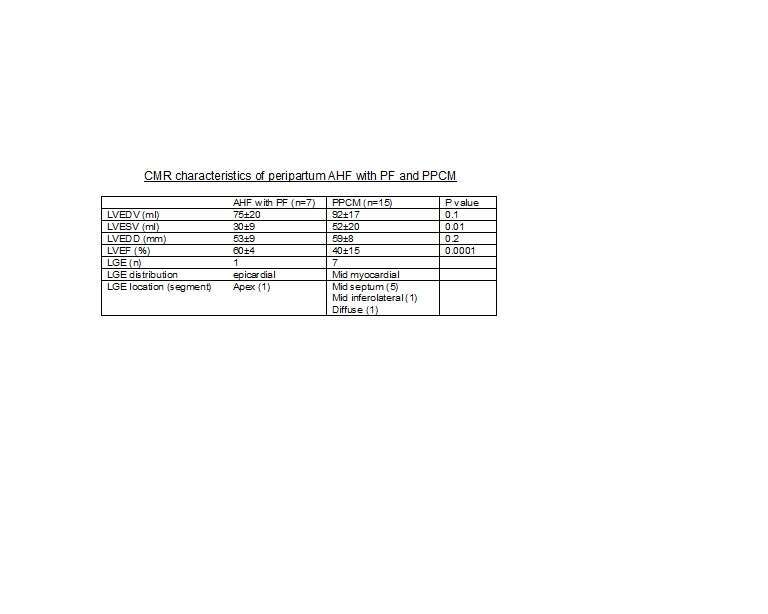Background: Peripartum cardiomyopathy (PPCM) is defined as the onset of acute heart failure (AHF) without identifiable cause one month pre to five months post partum. The differential diagnosis between patients who develop AHF in the presence of acute precipitating factors (PF) compared with classical PPCM is difficult. Therefore, most patients are discharged with a diagnosis of PPCM, an ominous condition regarding future pregnancies.
Purpose: To differentiate between peripartum AHF with PF and PPCM using Cardiac MRI (CMR).
Methods: The study cohort included women with clinical diagnosis of peripartum AHF who underwent CMR between 2006-2014. CMR included function and late gadolinium enhancement (LGE) sequences.
Results: CMR was performed in 7 and 15 patients clinically diagnosed AHF with PF and PPCM , in, respectively. PF included sepsis n=3), acute bleeding with massive fluid reposition (n=3) and air embolism (n=1).
Conclusion: PPCM was characterized by a significantly lower LVEF associated with mid myocardial LGE in 50% of cases. Thus, CMR can serve as an important tool in differentiating between patients PPCM from those developing peripartum AHF due to PF.

